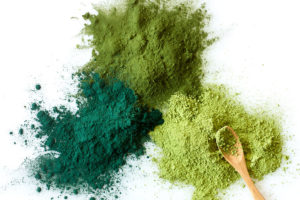For those navigating the challenges of compromised kidney function, especially individuals on dialysis, the search for supportive nutrition is a constant journey. The kidneys are our body’s master purifiers, filtering waste and maintaining a delicate balance of fluids and minerals. When they’re under stress, the entire system feels it. In the quest for natural support, a vibrant green superfood is making waves: fresh, living spirulina. But can this microscopic algae truly offer benefits for our vital kidneys? Let’s dive into the science.
The Kidney’s Herculean Task
Your kidneys work tirelessly, filtering about 120 to 150 quarts of blood daily to produce about 1 to 2 quarts of urine, composed of wastes and extra fluid. In conditions like chronic kidney disease (CKD), this filtering system becomes damaged. For those on dialysis, a machine must take over this critical function. A major factor contributing to kidney damage is oxidative stress—an imbalance between free radicals (unstable molecules that damage cells) and the antioxidants that neutralize them. Chronic inflammation also plays a significant role in the progression of kidney disease.
This is where spirulina’s unique biochemical structure becomes so compelling.
Fresh Spirulina’s Nutritional Powerhouse: A Friend to Kidneys?
Fresh spirulina is more than just a source of protein and vitamins; it’s a treasure trove of bioactive compounds with potent antioxidant and anti-inflammatory properties. The key to its potential kidney-protective effects lies in its molecular makeup.
C-Phycocyanin: The Blue-Green Miracle
The star component of spirulina is a brilliant blue pigment-protein complex called C-phycocyanin. Structurally, phycocyanin is a biliprotein, similar in structure to bilirubin, a compound your body produces that has its own antioxidant properties. Research suggests that phycocyanin is a powerful scavenger of a wide variety of free radicals.
- Antioxidant Action: It directly neutralizes harmful reactive oxygen species (ROS), protecting the delicate kidney cells (nephrons) from oxidative damage.
- Anti-inflammatory Effects: Phycocyanin has been shown to inhibit key pro-inflammatory enzymes like COX-2 (cyclooxygenase-2). By reducing inflammation, it may help slow the progression of cellular damage within the kidneys.
Superoxide Dismutase (SOD): The Antioxidant Enzyme
Fresh, living spirulina is a rich source of an essential enzyme called Superoxide Dismutase (SOD). Unlike dietary antioxidants like Vitamin C, SOD is an enzyme that your body uses as a primary line of defense against one of the most dangerous free radicals, the superoxide radical (). SOD catalyzes the conversion of superoxide into less harmful molecules: oxygen and hydrogen peroxide.
By bolstering the body’s SOD levels, fresh spirulina can help mitigate the cellular damage that characterizes kidney disease.
The Science Speaks: Research on Spirulina and Kidney Function
While large-scale human trials are still needed, a growing body of preclinical research points to spirulina’s kidney-protective (nephroprotective) potential.
Several studies have investigated spirulina’s effects on drug-induced kidney toxicity. In these studies, toxins known to cause severe oxidative stress and damage to kidney tubules were administered. The results have consistently shown that spirulina supplementation can significantly reduce markers of kidney damage, such as blood urea nitrogen (BUN) and creatinine. The structural basis for this protection is attributed to phycocyanin’s ability to prevent cellular lipid peroxidation (damage to cell membranes) and replenish the body’s own antioxidant stores.
For individuals on dialysis, who experience immense oxidative stress, these findings are particularly promising. By helping to quell the storm of inflammation and oxidative damage, spirulina could theoretically support overall well-being and cellular health between treatments.
Fresh vs. Dried: Why It Matters for Kidney Support
The form of spirulina you consume is crucial. Most spirulina on the market is sold as a dried powder. The high-heat drying process used to create these powders can degrade or destroy delicate, heat-sensitive compounds like the enzyme SOD and can diminish the potency of phycocyanin.
Fresh, raw, living spirulina delivers these compounds in their most potent and bioavailable state. The enzymes are active, the pigments are vibrant, and the full spectrum of nutrients is preserved, offering what we believe is the most effective form for therapeutic potential.
A Note for Dialysis Patients: Collaborate with Your Doctor
It is absolutely essential for anyone with kidney disease, particularly those on dialysis, to approach any new supplement with caution and professional guidance. While spirulina is a whole food, it contains minerals like phosphorus and potassium, which are strictly monitored in renal diets.
Always consult with your nephrologist or renal dietitian before incorporating spirulina into your routine. They can help you determine if it’s appropriate for you and advise on a safe amount that fits within your specific dietary restrictions. Open communication with your healthcare team is key to safely integrating supportive foods into your health plan.
The Takeaway: A Hopeful Horizon
The structural foundation of fresh spirulina—with its powerful phycocyanin complex and active SOD enzymes—provides a strong scientific basis for its potential role in supporting kidney health. By combating the core issues of oxidative stress and inflammation, it stands out as a hopeful, natural ally. While it is not a cure, incorporating high-quality, fresh spirulina into a carefully managed diet, with the approval of your doctor, may be a wonderful step in nurturing your body’s incredible filtering system. ✨






Recent Comments